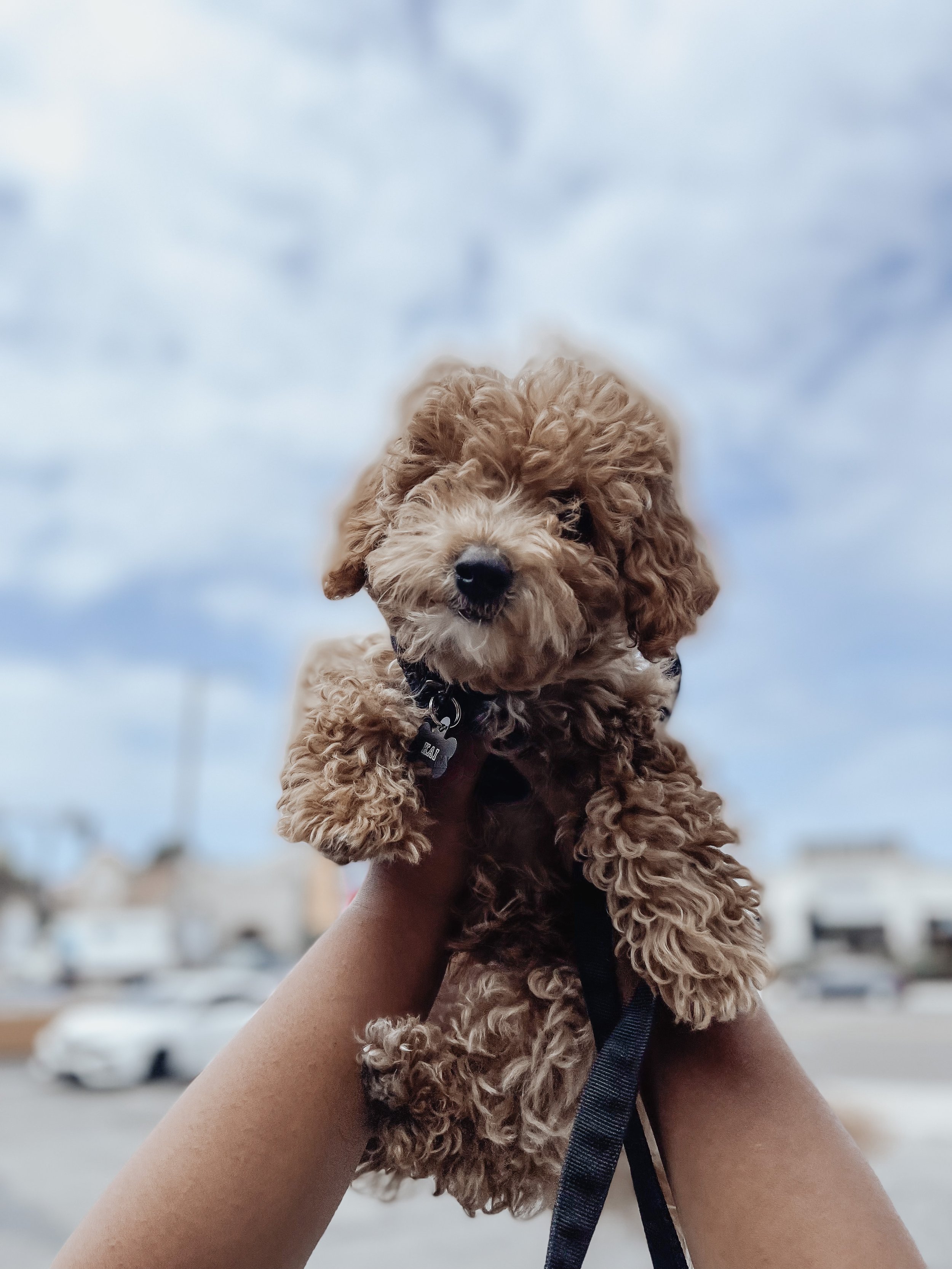Bringing home your new puppy means starting off on the right foot. Begin by crate training immediately, providing a safe and happy space for your furry friend.
The first night is crucial, so make sure your puppy has a comfortable place to sleep, such as a crate or a puppy pen. It’s important to establish a routine and set boundaries from day one. Prepare the essentials, such as a leash, collar, dog toy, and dog bed, before bringing your new puppy home.
By following these steps, you’ll ensure a smooth transition and a happy, healthy start for your new furry family member.

Credit: www.akc.org
Preparing For Your New Puppy
Get ready for your new bundle of joy with our comprehensive guide on bringing home your new puppy. From crate training to potty training, we cover all the essentials you need to know to ensure a smooth transition for both you and your furry friend.
Introducing The Crate And Potty Spot
When bringing home a new puppy, it’s crucial to introduce them to the crate and establish a designated potty spot. The crate serves as a safe space for your puppy to relax and sleep, as well as a valuable tool for potty training. Be sure to choose a crate that is the appropriate size for your puppy’s current size, with enough space for them to stand, turn around, and lay down comfortably. Place some soft bedding and a few chew toys inside to make it inviting.
The potty spot is where you want your puppy to do their business. This can be a designated area in your yard or a specific spot on your balcony if you live in an apartment. Use positive reinforcement and rewards when your puppy goes potty in the right spot, such as treats or praise. Consistency is key when training your puppy, so be sure to take them to the potty spot frequently, especially after meals and naps.
Essential Items To Buy Before Bringing Your Puppy Home
Before bringing your new furry friend home, it’s important to stock up on some essential items to ensure a smooth transition. Here’s a checklist of what you’ll need:
- Leash: A proper leash is necessary for walks and outings with your puppy.
- Dog harness: A harness provides better control and prevents strain on your puppy’s neck during walks.
- Collar: Choose a collar that fits well and attach an identification tag with your contact information.
- Dog toy: Toys are essential for your puppy’s mental and physical stimulation.
- Dog crate: As mentioned earlier, a crate provides a cozy and secure space for your puppy.
- Dog bed: Invest in a comfortable bed where your puppy can rest and sleep.
- Dog food: Purchase high-quality puppy food that meets their nutritional needs.
- Brush: Regular grooming is important for maintaining your puppy’s coat and overall health.
Puppy Sleeping Arrangements
Puppies need plenty of sleep to grow and develop properly. Establishing a comfortable sleeping arrangement is essential. While some owners prefer to have their puppy sleep in their bed, others choose to crate train their puppy to sleep in their own space. Crate training can help with potty training and prevent any bedtime accidents.
If you decide to have your puppy sleep in their crate, place it in a quiet area of your home, away from any draft or noise. Ensure the crate is cozy and inviting by lining it with soft bedding and a few familiar toys. Remember to keep the crate door open initially to allow your puppy to explore and get used to the space.
Alternatively, if you want your puppy to sleep in your room, consider setting up a small comfortable bed or a designated area with a cozy blanket. This way, your puppy will feel secure and reassured by your presence. Ensure that the sleeping area is safe and free from any hazards.

Credit: snugglepuppy.com
Bringing Your Puppy Home
Bringing home your new puppy? Find out how to prepare for their arrival, including essential items like a leash, collar, and dog toy. Discover helpful tips for the first night, crate training, and potty training. Make their transition to their forever home a smooth and positive experience.
Bringing Your Puppy Home In A Car
Bringing your puppy home in a car can be an exciting and memorable experience. However, it’s important to ensure a safe and comfortable journey for your furry friend. Here are some tips to make the car ride enjoyable for both you and your new puppy:
- Use a secure crate or a harness to keep your puppy safe during the car ride.
- Place a comfortable blanket or bed in the crate for your puppy to relax.
- Always keep your puppy restrained to prevent any accidents or distractions.
- Avoid feeding your puppy right before the car ride to prevent nausea or discomfort.
- Make frequent stops along the way to allow your puppy to stretch their legs and go potty.
Reminders Before You Head Home
Before you bring your new puppy home, it’s essential to make some preparations to ensure their smooth transition into their new environment. Here are a few reminders to keep in mind:
- Prepare a warm and cozy space for your puppy, such as a crate or a designated area in your home.
- Stock up on essential supplies, including food, water bowls, toys, bedding, and puppy-friendly cleaning products.
- Remove any potential hazards or toxic substances from your house to create a safe environment for your puppy.
- Arrange a visit to the veterinarian for a health check-up and to discuss vaccinations, flea, and tick prevention.
When You Arrive Home
Finally, the moment has arrived, and you are bringing your new puppy home. Here’s what you should do upon arrival:
- Allow your puppy some time to explore their new surroundings while providing gentle supervision.
- Show your puppy their designated potty area and encourage them to go potty outside.
- Introduce your puppy to their crate or designated sleeping area and make it as comfortable as possible.
- Start establishing a routine for feeding, playtime, and potty breaks to help your puppy settle in.
- Give your puppy lots of love, praise, and positive reinforcement to create a strong bond.
First Night With Your Puppy
On your puppy’s first night, it’s best to have them sleep in a crate or puppy pen near your bed. This allows them to feel secure and gives you easy access for nighttime potty breaks. Creating a comfortable sleeping space will help ease their transition into their new home.
Puppy Crate Training
One of the most important things you can do on your puppy’s first night at home is to introduce them to their crate. A crate serves as a safe space for your puppy and helps with their overall training and development. To make crate training a positive experience:
- Choose a crate that is the appropriate size for your puppy. It should be big enough for them to stand, turn around, and lie down comfortably, but not so big that they have room to use one side as a bathroom and the other for sleeping.
- Place some cozy bedding and a few toys in the crate to make it inviting and comfortable for your puppy.
- Start by allowing your puppy to explore the crate on their own. Encourage them to go inside by placing treats or small pieces of their favorite food near the entrance.
- Gradually increase the amount of time your puppy spends in the crate, starting with short periods and gradually extending them over time.
- Never use the crate as a form of punishment. It should always be a positive and safe space for your puppy.
Puppy Potty Training
Potty training can be a challenging task, but it is essential for the well-being of your puppy and the cleanliness of your home. To start potty training your puppy:
- Establish a consistent schedule for taking your puppy outside to eliminate. Puppies usually need to go potty after waking up, eating, drinking, and playing.
- Take your puppy to the same spot in your yard every time. The smell will help them associate the area with going potty.
- Stay outside with your puppy and provide positive reinforcement, such as treats and praise, when they go potty in the designated area.
- If your puppy has an accident indoors, clean it up without scolding them. Use an enzyme-based cleaner to eliminate any lingering odor.
- Be patient and consistent. Potty training takes time and effort, but with proper consistency and positive reinforcement, your puppy will eventually learn.
Tire Out Your Puppy Before Bed
Before settling down for the night, it’s important to tire out your puppy to ensure a more peaceful bedtime. Puppies have a lot of energy and need plenty of exercise to prevent unwanted behaviors and help them sleep through the night. Here are a few ways to tire out your puppy before bed:
- Engage in playtime, such as fetch or tug-of-war. This will not only tire them out physically but also mentally stimulate them.
- Take your puppy for a walk or run. This provides an opportunity for them to explore their surroundings and burn off excess energy.
- Provide interactive toys, such as puzzle toys or treat-dispensing toys, to keep your puppy engaged and mentally stimulated.
- Avoid stimulating activities, such as rough play or overly exciting games, close to bedtime as these can make it difficult for your puppy to settle down.
Puppy Bedtime Training
Establishing a bedtime routine for your puppy is crucial in helping them adjust to their new environment and develop good sleep habits. Here are some tips for successful puppy bedtime training:
- Set a consistent bedtime and stick to it every night. This will help your puppy understand when it’s time to wind down and sleep.
- Create a comfortable sleeping area for your puppy, whether it’s a crate or a designated bed. Make sure it’s a quiet and cozy space free from distractions.
- Establish a calming routine before bedtime, such as a short walk, gentle playtime, or a calming massage. This signals to your puppy that it’s time to relax.
- Avoid giving your puppy food or water close to bedtime to minimize the need for nighttime bathroom breaks.
- Use a white noise machine or calming music to drown out any noises that may startle your puppy and disrupt their sleep.

Credit: www.thepuppyacademy.com
Essential Puppy Training Tips
Bringing home your new puppy can be an exciting but challenging experience. Follow these essential training tips to ensure a smooth transition for your furry friend. Create a designated sleeping area for your puppy, such as a crate or puppy pen near your bed, to help them feel safe and secure during their first night in their new home.
Must-have Items For Your New Puppy
A puppy collar is an essential item to have for your new furry friend. It helps keep them safe and secure during walks and outdoor activities. Make sure to choose a collar that is the right size and fits comfortably around your puppy’s neck.
A puppy house or long line is a great tool for training and ensuring your puppy’s safety. It allows them to explore while still being under your control. Use it to teach them boundaries and recall commands.
A puppy leash is crucial for taking your puppy on walks. Choose a leash that is sturdy and the appropriate length for your puppy’s size. Remember to keep a firm grip on the leash for their safety.
To keep your new puppy entertained and engaged, invest in a variety of puppy toys. Choose toys that are safe, durable, and appropriate for their age and size. Toys can help with teething, mental stimulation, and bonding.
Puppy treats are a must-have for positive reinforcement training. Use treats to reward your puppy for good behavior and to help teach them commands. Make sure to choose healthy treats that are suitable for puppies.
A cozy and comfortable puppy bed is essential for providing your new furry friend with a safe and secure place to rest. Choose a bed that is the right size for your puppy and made with materials that are easy to clean.
A puppy crate is a valuable tool for house training and giving your puppy a sense of security. Make sure to choose a crate that is the appropriate size for your puppy’s current and future growth. Use it as a safe space for your puppy when you cannot supervise them.
Invest in a set of puppy bowls for your new furry friend’s food and water. Choose bowls that are the right size and easily washable. Having designated bowls for your puppy’s meals helps with portion control and cleanliness.
Before bringing your new puppy home, make sure to have high-quality puppy food on hand. Consult with your veterinarian to determine the right type and amount of food for your puppy’s specific needs. Gradually transition them to the new food to prevent digestive issues.
Tips For A Smooth Transition
Bringing home your new puppy can be an exciting and sometimes challenging experience. To ensure a smooth transition, it is important to set up a comfortable sleeping area for your puppy, provide them with essential supplies such as a leash and collar, and establish a consistent routine for feeding and potty training.
Additionally, giving your puppy plenty of love, attention, and socialization will help them adjust to their new environment.
Where Should Your Puppy Sleep On The First Night?
If you want a smooth transition for your new puppy, it’s essential to decide where they will sleep on their first night in their new home. It’s recommended that you keep your puppy close to you during this time to provide comfort and reassurance. Having them sleep in a crate or a designated puppy bed in your bedroom can help them feel secure and minimize their anxiety. However, avoid having them sleep on your bed from the beginning to establish boundaries and prevent future behavior issues.First Steps To Take When You Bring Your Puppy Home
When you bring your new puppy home, there are a few important steps to take to ensure their well-being and help them adjust to their new environment. Firstly, introduce them to their designated living and sleeping areas, including their crate or bed. Secondly, establish a routine for feeding, potty breaks, playtime, and naptime. Consistency is key to training and helps your puppy feel secure. Lastly, gradually introduce them to family members, keeping the atmosphere calm and quiet to prevent overwhelming them.Adjusting To Their New Home
Bringing a puppy into a new home can be an overwhelming experience for them. To help them adjust, start by providing a quiet and comfortable space where they can relax. Set up their crate or bed with their favorite toys and blankets, making it their safe haven. Allow them to explore their new surroundings at their own pace, but supervise them closely to prevent any accidents or destructive behavior. It’s also important to establish a routine and stick to it, as puppies thrive on consistency and predictability. Gradually introduce them to new experiences, people, and other pets, always monitoring their reactions and providing positive reinforcement for calm behavior. Remember, patience and love go a long way in helping your puppy feel secure in their new home.Frequently Asked Questions On Bringing Home Your New Puppy
Where Should Puppy Sleep First Night?
The best place for your puppy to sleep on the first night is in a crate or a puppy pen next to your bed. You can choose if you want them in the bedroom or set up a temporary bed elsewhere.
Purina recommends crate training and introducing the puppy to the designated potty spot.
What’s The First Thing You Should Do When You Bring A New Puppy Home?
The first thing you should do when you bring a new puppy home is to start crate training immediately. Introduce the puppy to the crate and designated potty area, and provide them with a safe and comfortable space.
How Long Does It Take For New Puppies To Get Used To Their New Home?
It can take new puppies a few days to a few weeks to get used to their new home. The key is to provide a safe and comfortable space for them, like a crate or designated area. Start crate training right away to help them feel secure.
What Not To Do When Bringing A Puppy Home?
When bringing a puppy home, there are a few things you should not do. Avoid starting the training process too late. Do not neglect basic obedience training. Avoid overwhelming the puppy with too many visitors or activities. Don’t leave the puppy unsupervised for long periods of time.
Lastly, do not neglect socialization and exposing the puppy to new experiences.
Conclusion
Bringing home your new puppy is an exciting and joyful experience. To ensure a smooth transition for both you and your furry friend, it’s important to create a safe and comfortable environment. Start by crate training your puppy and introducing them to their designated potty spot.
Remember to provide them with essential supplies such as a leash, collar, and toys. Establishing a consistent routine and providing love and care will contribute to a happy and well-adjusted pup. Enjoy this new chapter with your adorable companion!”






